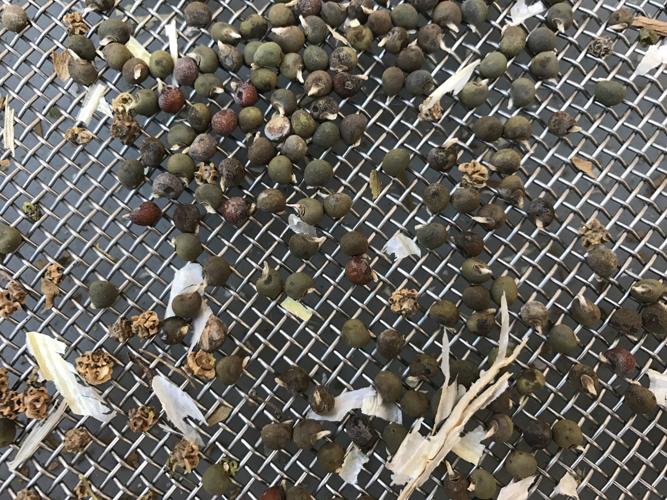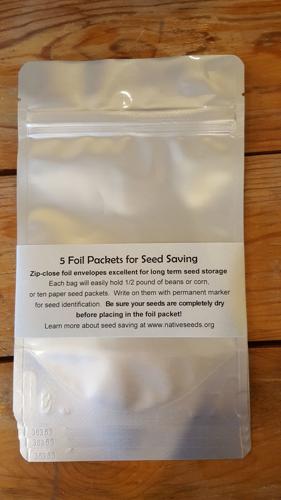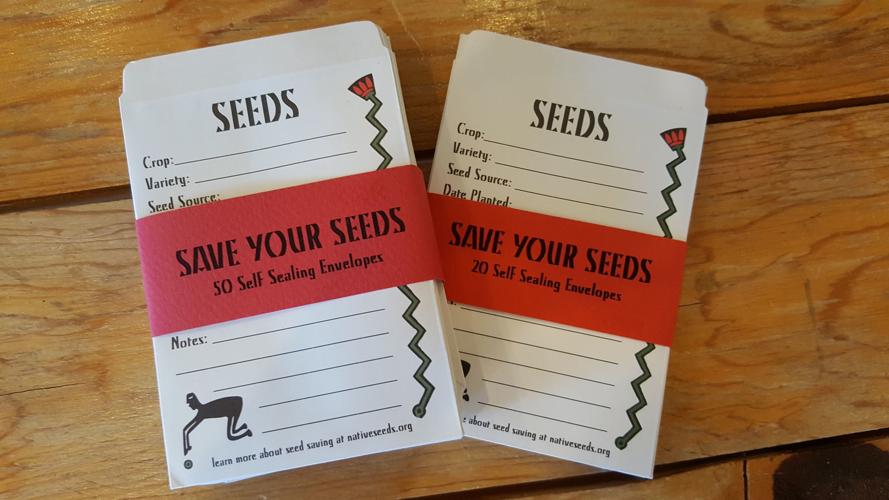If you plan to collect seeds from your summer garden, better get started now.
As the season winds down, you’ll have fewer chances to save seed.
Winter edibles like greens and roots produce seeds all at once after the plants flower at the end of their lives. Most of the summer garden’s seeds are within every piece of fruit that pops up throughout the season.
The challenge is how to find and save the best seeds.
“They don’t dry out on a plant, so it’s a little more complicated, but not necessarily difficult,” says Sheryl Joy, the collections curator at the nonprofit Native Seeds/SEARCH.
SELECTING
First off, collect seeds from fruit that is ripe.
This isn’t as clear-cut as you may think, says Joy, who has taught seed-saving classes for the organization, which preserves and distributes heritage, desert-adapted and other seeds.
Tomatoes, melons and winter squashes are usually ripe when they’re picked to be eaten.
Joy says you can “double dip” these, eating the flesh while saving the seeds.
Zucchini and other summer squashes, as well as pepper, chile, eggplant and cucumber are some fruits that we pick to eat when they are young and unripe.
To get mature seeds that will sprout, “you want to wait for them to get overripe,” she says.
Summer squashes are ready for seed-collecting once they drastically turn color and look unappealing to eat.
Bell peppers and chiles should be red or dark brown.
They will likely still be fine to eat, but they also are ready for seed-collecting.
Avoid seeds from plants that didn’t do so well, Joy says. Otherwise, you’re saving the weaknesses of that plant.
“You want to look at the plant that you’re collecting from and make sure it’s a healthy plant,” she says.
Also, save seeds from the plant that produced the tastiest fruit.
Consider saving seeds of plants that matured quickly, Joy adds. This could be helpful for next season when you’re trying to have plants set fruit before summer heat sets in.
SAVING
Saving summer seed is more complicated than getting them from winter edibles because of the variety of ways to collect them.
Peppers, melons and large chiles, among others, require only that you scrape seeds off from the inside of the fruit.
Tomatoes and small chiles require a blender and additional steps.
Native Seeds/SEARCH’s website provides some general seed-saving instructions. The Pima County Public Library’s website provides collecting instructions for specific plants that are in its seed library.
Both organizations, plus the Pima County Cooperative Extension, Mission Gardens of Tucson and the Community Food Bank regularly run seed-saving workshops.
All summer-crop seeds should be cleaned, dried, put in an air-tight container and stored in a cool, dark place. The refrigerator or freezer is fine.
Native Seeds/SEARCH sells seed envelopes with space to record important information. Larger foil packets hold several envelopes in a dry environment.
Joy suggests using a screen or coffee filter to dry seeds outside in the shade. Seeds won’t stick to them.
The Joel D. Valdez Main Library lends out seed-cleaning screens.
TRUE SEEDS
Planting seeds you collected in a previous year can be an adventurous exercise because of cross-pollination.
If one plant is pollinated by a different plant, the seed will have genes of both. That means you won’t know what kind of plant will come up when you sow the seed.
Zucchini and pumpkin can cross-pollinate if they aren’t isolated from each other, Joy says. The seeds from such a cross-pollinated plant could grow as a zucchini, a pumpkin or a hybrid of both.
Anything that needs pollinators are easily cross-pollinated. Self-pollinators like tomatoes, beans and peas don’t have this problem.
However, varieties of tomatoes and other crops are man-made hybrids and have two different types of parents. Seeds saved from hybrids can also yield plants of one parent or the other or both.
If something odd emerges from your collected seed, go ahead and grow it and see if something cool results, says Joy.
SEED BOUNTIES
If you collect more seed than you can use, you can donate some to seed libraries.
The collection at University of Arizona Libraries is the newest of these. It started offering free seeds to the public last spring.
The garden committee of the UA’s Students for Sustainability launched the bank at the Science and Engineering Library to address the food desert surrounding the campus.
Committee chair Alexandre DuBroy, a junior studying plant science, noted a lack of major grocery stores near campus.
“The seed library aims to make the university more sustainable by ... having students grow more of their own food.”
The UA seed library accepts seeds only from non-hybrid plants. DuBroy says any open-pollinated seed is acceptable, although those from desert- or Tucson-adapted plants are preferable.
Seeds can be dropped off at the Associated Students of the University of Arizona office in the Student Union or by making arrangements by emailing SFSgardens@gmail.com.
For the public library collection, people usually replace seeds they borrowed, but open-pollinated donations also are accepted. Cross-pollinated seeds are used for public craft projects like creating seed balls, says Betsy Langley, a member of the seed library team and managing librarian of the Santa Rosa branch.
Native Seeds/SEARCH also accepts seeds of all kinds. Hybrid or cross-pollinated seeds are put into envelopes and sold as “mystery seed,” says retail store manager Chad Borseth.







